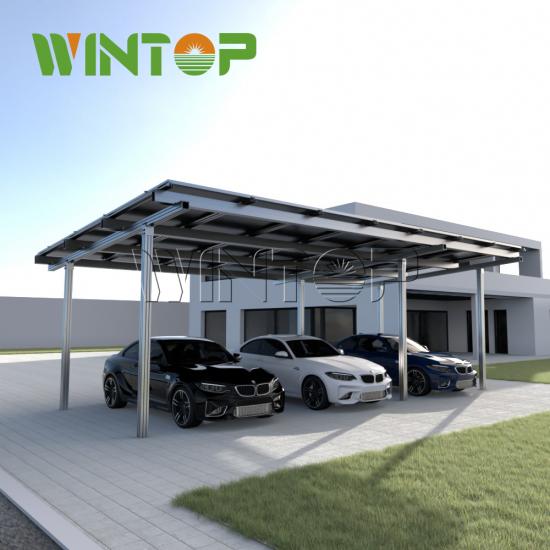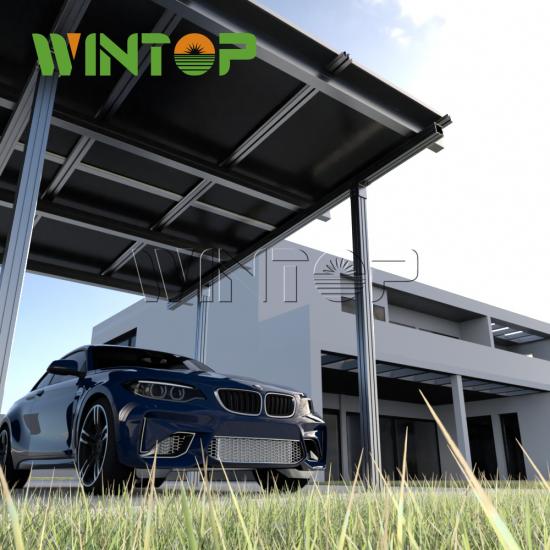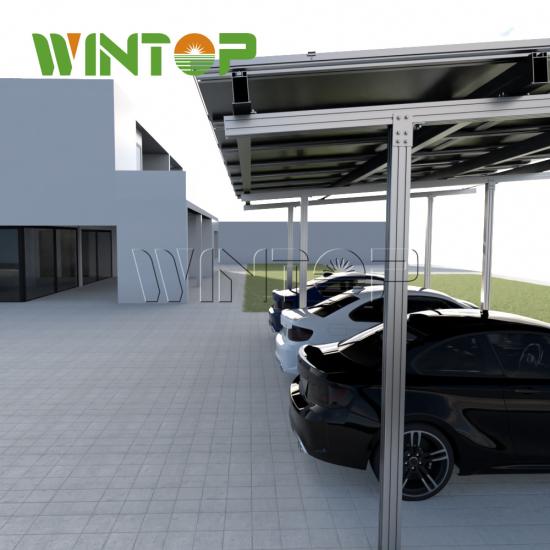solar carport structure can adapt to different climatic conditions, but its adaptability and design requirements may vary depending on specific climatic conditions.
Adaptability and design requirements
Weather resistance and wind resistance: Modern membrane materials have undergone special treatment and have excellent characteristics such as UV resistance and anti-aging, which can be used for a long time in various harsh weather conditions. For extreme weather conditions such as strong winds, heavy snow, or areas with frequent earthquakes, special design is required to ensure safety and stability. For example, in areas with strong winds, it may be necessary to add anchoring systems; In areas with heavy snowfall, it is necessary to consider the impact of snow load and design appropriate drainage measures

Drainage and waterproof design: In rainy and humid environments, the design of carports should consider the discharge of rainwater to ensure effective drainage during the rainy season and avoid water accumulation. For example, the H-shaped structure with double slope symmetrical design helps improve drainage efficiency and is suitable for rainy areas
Light conditions: The photovoltaic carport requires sufficient light to generate electricity normally. Therefore, the carport should face due south to obtain maximum sunshine duration and better light intensity

Specific design recommendations under different climatic conditions
Tropical climate: In the tropical climate zone, the shed materials shall have good heat resistance and aging resistance. Ventilation and heat dissipation should be considered during design to avoid heat accumulation
Temperate climate: In temperate climate zones, carport design should take into account both winter warmth and summer sun protection. Using films with good transparency can reduce reliance on artificial lighting and create a warm and comfortable atmosphere

Cold climate: In cold regions, carport materials should have good insulation performance, and design should consider adding insulation layers and snow prevention measures to ensure normal operation in low temperature environments

 Tiếng Việtvi
Tiếng Việtvi Tiếng Việtvi
Tiếng Việtvi


